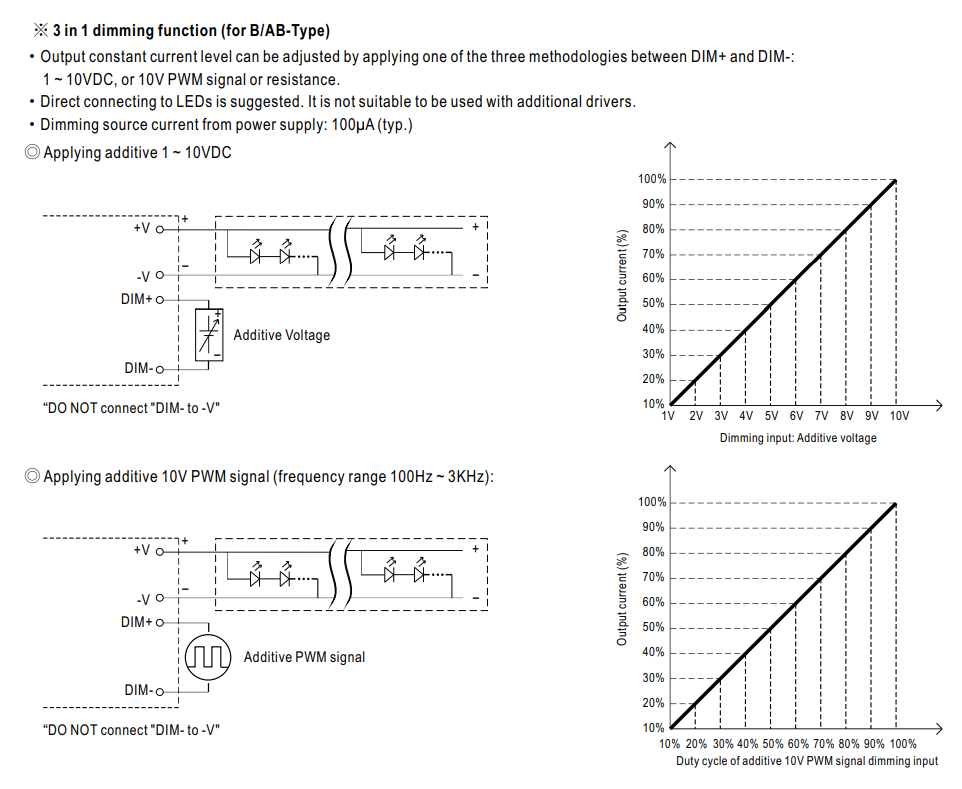I see you've asked a few related questions about LED drivers, so I'll try and give a big picture answer.
You put current through LEDs and photons are generated at some rate, roughly 1 photon per 1.5-3 electrons. To move that current you apply some voltage, with small changes in voltage leading to very large changes in current. Unfortunately, the specific voltage required for a current varies from device to device, and significantly for each device as it heats up as discussed in your previous question. For this reason we say that LEDs are current-driven devices, and we previously talked about why this means you need an LED driver and cannot just use a constant voltage source.
Now to your specific points:
They are constant voltage.
Lets look at the datasheet:

See how they specify a constant current and a range of voltages? That means it is a constant current LED. However, you don't even need to look at the datasheet to know that. A constant voltage light means that there is some kind of current regulation or power supply integrated into the light, and there is clearly no such thing in the picture. It is just an LED and thus constant current.
Furthermore, constant voltage devices are usually very cheap, very low power devices like holiday lights and things you can buy for a few dollars on Ebay. They are things that are drawing a few watts. That is a kilowatt class COB selling for over $1000. Odds are it will be constant current because the power supply required to make that constant voltage will be huge and very expensive.
I need to tune the voltage between 6 LED drivers (Meanwell hlg-320h-36ab) that delivers 36Vdc
Lets look at your datasheet again:

So that is a constant current driver outputting 8.9A with a voltage between 18 and 36V. Immediately you should realize that this is a problem, since like we discussed in your last question you need a driver whose voltage range spans the range of your diode, whereas this driver does not. In addition, 48A divided into 6 channels means 8 amps per channel (I'm taking your word for this, there is nothing in the datasheet indicating that the LED is wired like you suggest), so you'd also be overdriving the LED. Since that driver has too low of a voltage and too high of a current, you should instead pick the -42 model, which can drive 21 to 42V, which spans your 30-42v range nicely.
This will change the color temperature of the light produced.
That is a fixed color temperature LED (5600K) so all you can change is the brightness, and you can do that by lowering the current. If you want to change the color temperature, buy two different LEDs, one higher and the other lower temperature and change the ratio of one to the other.
What is the proper way to adjust in parallel (ie., to the same value at the same time) the tension for the 6 currents in those circumstances ?
Looking at the datasheet again:

So yes, there are a couple ways to do this. You can use voltage control on a 1-10V scale or PWM. The 1-10V scale is typically used by dedicated lighting controllers, while the PWM is meant to be easy to use from simple microcontrollers like an Arduino. In either case, you can generate one of those signals from a central controller or PC which will raise and lower all of the lights. If you do go for color temperature control, you can also program in color temperature by adjusting the ratio of the individual driver currents.
The current is not changed, but voltage.
You cannot change voltage without also changing current. In this case, all you can directly control is current. Your driver has a control loop which gradually ramps up voltage, checks current and then adjusts voltage to control the current. We discussed why in your previous question, but the reason for this is the NTC of the LEDs. If you try to control their brightness by voltage it is very easy to enter thermal runaway and blow up your 1000 dollar COB or burn your house down. The control loop on your driver compensates for this; as the NTC kicks in and the voltage required decreases, the driver notes the increase in current and drops the voltage to compensate. This is ABSOLUTELY CRITICAL with a kilowatt class light! It will heat up so fast that without current control, you'll enter thermal runaway very easily and damage your equipment or worse.



